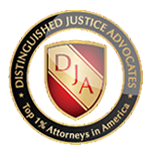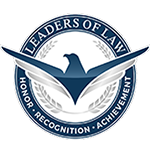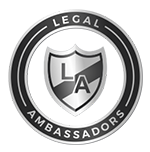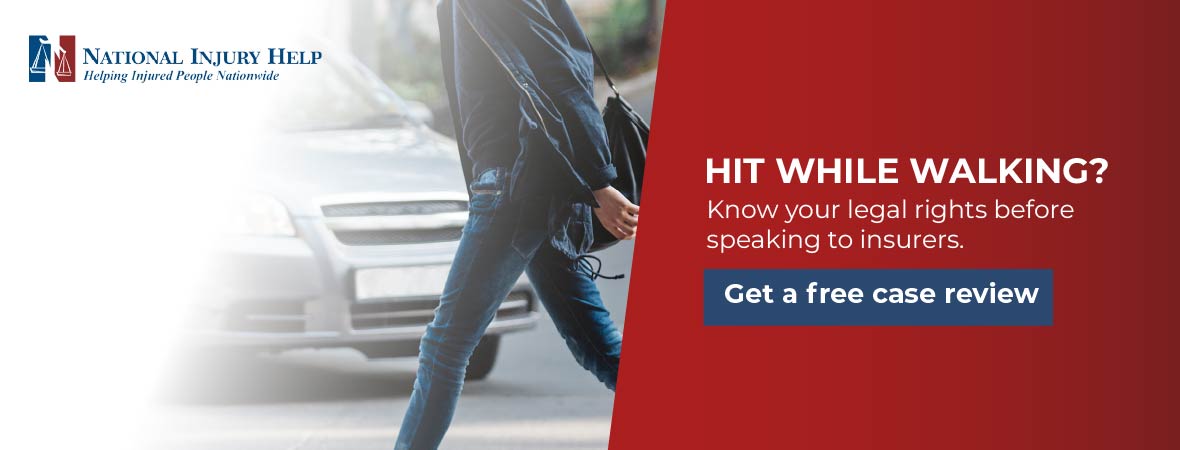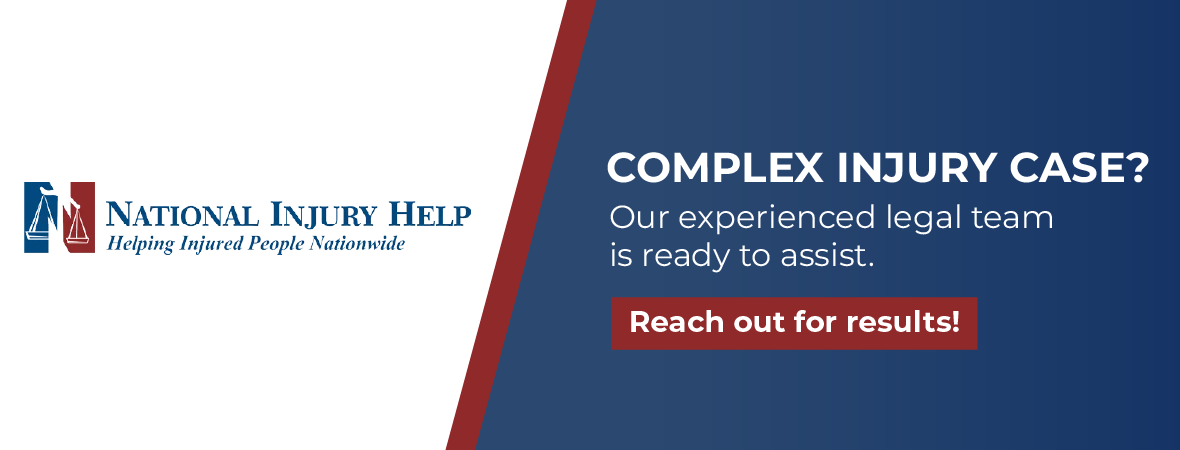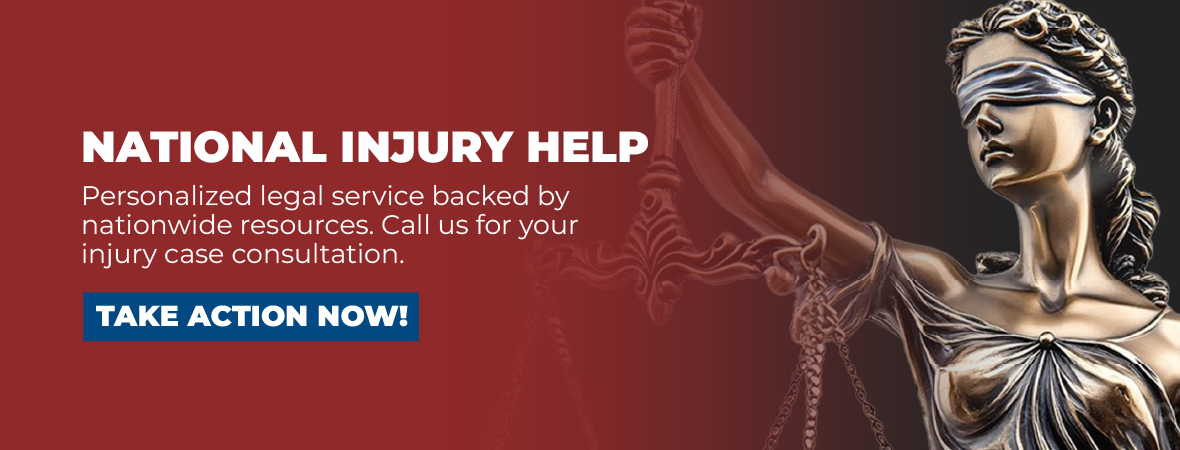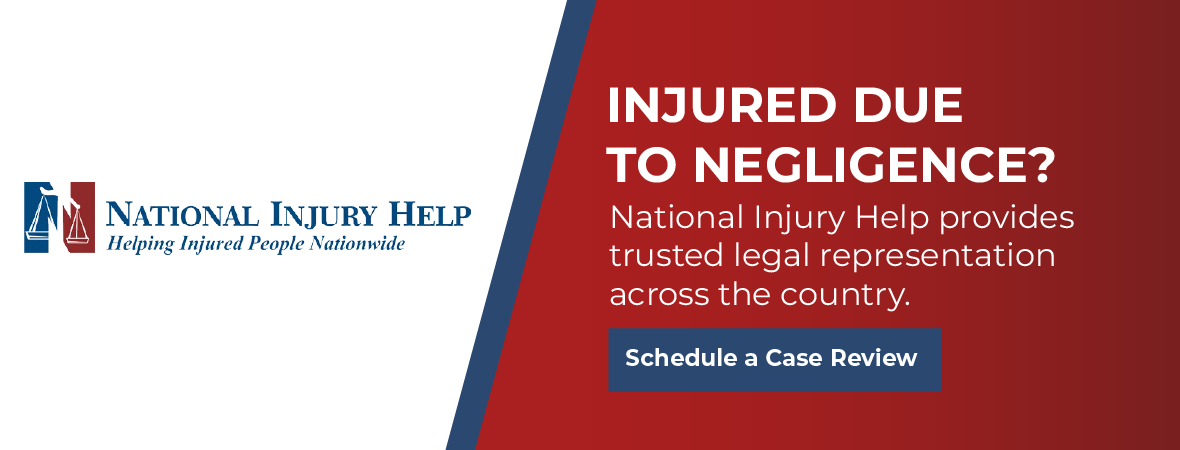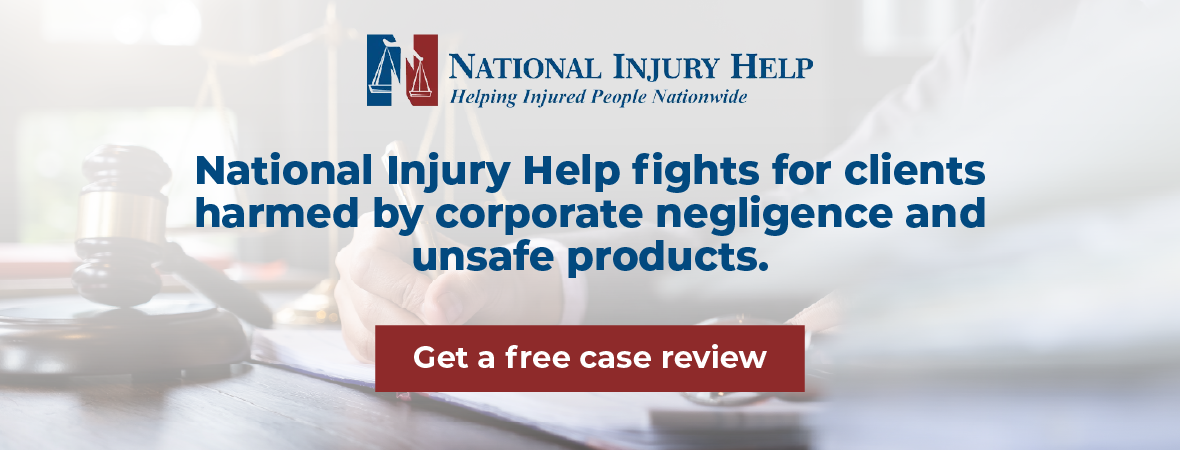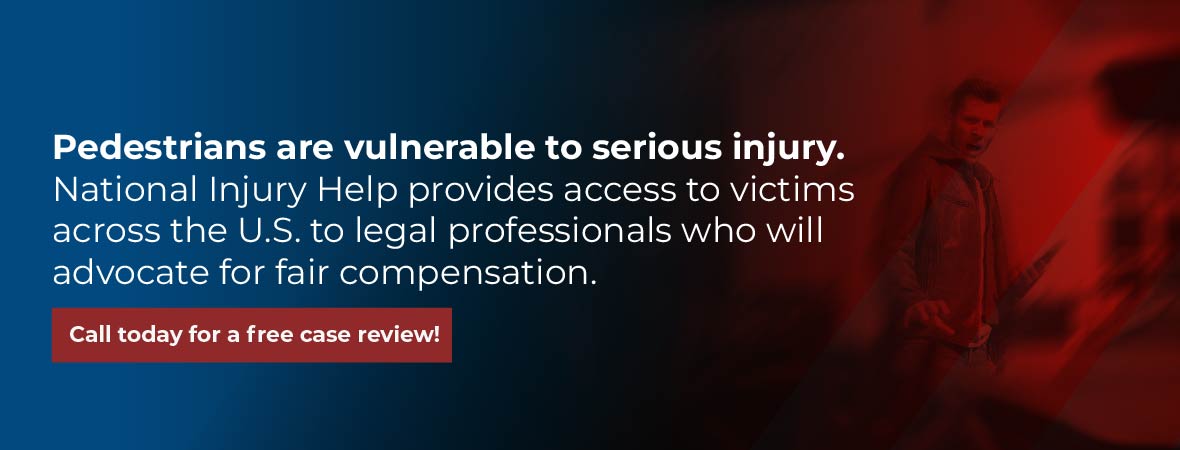If you were hit by a car while walking, the injuries can be serious, and the legal process can be confusing. Contact National Injury Help today by calling 1 (800) 214-1010. We are here to stand up for your rights and recovery.
A simple walk across the street, a jog around the block, or a child’s excited sprint toward the school bus can turn into tragedy in a matter of seconds when a moving vehicle and a person on foot cross paths.
In the United States, more than 7,000 pedestrians are killed every year, and tens of thousands more are injured. These are not just numbers. Behind each case is a life suddenly disrupted and a family left scrambling to deal with hospital visits, medical bills, missed work, pain, trauma, and grief.
Pedestrian accidents create a ripple effect that changes daily routines, emotional stability, and long-term goals. During this overwhelming time, a pedestrian accident lawyer becomes more than a legal guide.
The right attorney serves as your advocate, your investigator, and your protector. They gather critical evidence, speak with insurance companies, and fight for fair compensation, all while you focus on recovery.
National Injury Help provides free consultations and charges no legal fee unless we win your case. Our team is dedicated to helping victims and their families rebuild their lives after a pedestrian accident, whether the crash occurred in a busy city, a quiet suburb, or a rural highway. On this page, we will explain your rights, walk through the legal process, and outline exactly how to hold negligent drivers accountable.
Pedestrian Accidents: What You Need to Know
Walking is one of the most basic and accessible forms of transportation. It’s free, it’s healthy, and it’s even environmentally friendly. But in too many communities across the United States, walking comes with serious risks, especially in areas that have been designed with cars in mind, and not so much for people.
Over the past decade, pedestrian fatalities have been steadily on the rise. According to national traffic safety data, thousands of people are struck and killed by vehicles every year, and many more suffer life-altering injuries. These incidents can happen anywhere, from quiet residential streets to hectic downtown intersections. But certain conditions, like wide roads with fast-moving traffic, poor lighting, and distracted drivers, make pedestrian accidents far more likely.
Understanding when and where these crashes happen, who is most at risk, and what can be done to prevent them is key to staying safe and knowing your legal rights if the worst happens.
Why Are Pedestrian Accidents on the Rise?
Several factors contribute to the growing number of pedestrian injuries and deaths. Cities and suburbs alike have seen major population growth, which means more cars, more congestion, and more people walking on or near roads not built for foot traffic.
Many suburban communities are designed with long stretches of road, few crosswalks, and high speed limits. When people try to cross these roads, often out of necessity rather than choice, they are exposed to fast-moving traffic with few protections. In urban areas, weekend nights are particularly dangerous. Between alcohol consumption, distracted driving, low visibility, and heavy foot and car traffic, crossing the street can become a perilous task.
Fatal pedestrian crashes often occur in the final hours of darkness, just before sunrise or after sunset, when visibility is low and drivers are more likely to be tired or impaired. Street lighting in many places is poor, and crosswalks may be missing or badly faded. These conditions, combined with high-speed traffic and driver inattention, create a deadly mix.
Most Common Causes of Pedestrian Accidents
Pedestrian accidents rarely happen without warning signs. While every case is different, many crashes involve one or more of the following causes:
1. Distracted Driving
Even a two-second glance at a phone is enough time for a driver to drift out of their lane or fail to notice a pedestrian in a crosswalk. Texting, checking GPS, adjusting the radio, or eating while driving are all common distractions that lead to serious consequences.
2. Speeding
When a driver is speeding, they have less time to react to a person stepping into the road. The faster the car is moving, the more likely it is to cause severe injuries or death upon impact. A crash that might be survivable at 20 miles per hour can be fatal at 40 or 50 miles per hour.
3. Failure to Yield
Many pedestrian crashes happen when drivers fail to yield the right-of-way. This is especially common at intersections where a driver turns without properly checking for someone crossing the street. Pedestrians often have the legal right-of-way, but that doesn’t help if a driver isn’t paying attention.
4. Driving Under the Influence
Alcohol and drugs, including cannabis and some prescription medications, can slow reaction times and impair judgment. Intoxicated drivers are less likely to spot pedestrians and more likely to make risky decisions, especially at night when visibility is already poor.
5. Unsafe Road Conditions
Poorly maintained roads and infrastructure often contribute to pedestrian accidents. This includes missing or broken streetlights, faded or absent crosswalk markings, long distances between traffic lights, and uneven sidewalks. These hazards make it harder for both drivers and pedestrians to travel safely.
Who Is Most at Risk?
While anyone can be struck by a vehicle, certain groups face a higher risk due to their physical abilities, routines, or environments. Understanding who is most vulnerable can help focus prevention efforts and make roads safer for everyone.
Children
Children walking to and from school, playing near the street, or visiting friends in the neighborhood are especially vulnerable. Due to their small size, they are harder for drivers to see, and they may not always make safe choices when crossing roads. Impulsiveness and a lack of traffic awareness make child pedestrians more likely to dart into the street without warning.
Older Adults
Seniors often move more slowly and may have trouble hearing or seeing oncoming traffic. They also tend to be more seriously injured in accidents due to physical frailty. Conditions like arthritis or the use of mobility aids can make it harder to cross wide streets quickly or navigate poorly maintained sidewalks.
Early Morning and Late-Night Workers
People who work during non-traditional hours, such as janitors, factory workers, nurses, or restaurant staff, often walk in low-light conditions. In the early morning or late at night, drivers are less alert, roads are less supervised, and visibility is poor. These workers may also rely more heavily on public transportation and walking to get to and from their jobs.
Laws That Protect Pedestrians
Traffic laws vary by state, but many protections for pedestrians are consistent across the country. In most states, drivers must yield to pedestrians who are in a crosswalk or who are legally crossing at an intersection, even if there are no signals. School zones, residential neighborhoods, and commercial areas often require drivers to slow down and watch for foot traffic.
That said, pedestrians must also follow safety rules. They are expected to use crosswalks when available, obey walk signals, and avoid stepping suddenly into traffic. When accidents occur, courts examine both the pedestrian’s actions and the driver’s behavior.
Even if a pedestrian is found partially at fault, they may still be eligible to recover money through a pedestrian injury claim, depending on state laws.
Comparative Negligence: What Happens If Both Parties Share Blame?
In many states, the concept of comparative negligence applies. This means a pedestrian can still receive compensation even if they are partially at fault for the crash. Their total recovery is reduced by the percentage of blame assigned to them.
For example:
- If a driver rolls through a stop sign and hits someone walking legally across the street, the driver is likely to bear nearly all the fault.
- If a pedestrian crosses outside a crosswalk at night in dark clothing, they may be held mostly responsible, especially if the driver was not speeding or distracted.
Some states allow recovery even if the pedestrian is 99% at fault, while others cut off compensation if the pedestrian is more than 50 or 51% responsible. A knowledgeable hit-by-car attorney can explain how these laws apply in your specific case and ensure you do not lose out on the compensation you deserve.
Statutes of Limitations and Government Notice Deadlines
Every state has a statute of limitations for personal injury claims, which sets the deadline for filing a lawsuit. These time limits vary but are usually between one and three years from the date of the accident. If you miss the deadline, you could lose your right to pursue a claim, no matter how strong your case is.
If a government agency is involved, such as when a city failed to maintain a traffic signal or design a safe crosswalk, additional rules apply. Most states require special notice to be sent within a short window, sometimes as little as 90 days after the incident. If that notice is not sent in time, you may lose your ability to sue the city or state.
Because of these strict deadlines, it is important to speak with a pedestrian accident lawyer as soon as possible.
Common Injuries After Pedestrian Accidents
Pedestrians have no seatbelts, airbags, or metal shells to protect them. When a car strikes someone on foot, the resulting injuries can be catastrophic or even fatal.
Serious Injuries Include:
- Traumatic Brain Injuries: These can affect memory, personality, and speech. Recovery often requires lifelong therapy.
- Spinal Cord Damage: Paralysis or limited mobility may follow, requiring expensive home changes and ongoing assistance.
- Bone Fractures: Legs, hips, and ribs are often broken in pedestrian crashes. These injuries may require multiple surgeries and extensive rehabilitation.
- Internal Injuries: Bleeding or organ damage may not be visible at the scene but can become life-threatening within hours.
- Psychological Injuries: PTSD, anxiety, and depression are common, especially if the accident involved high trauma or loss of life.
The ripple effect of these injuries impacts not only the victim but their entire household. Family members may need to take time off work, change their routines, and cover unexpected costs. All of this should be included in your pedestrian injury claim.
What to Do After a Pedestrian Accident
Being hit by a car is a traumatic experience that can leave you shocked, confused, and in pain. Whether the injuries seem minor at first or are clearly severe, the moments right after a pedestrian accident are critical. The steps you take can affect not only your health but also your ability to recover compensation for medical bills, lost wages, and other damages.
In the aftermath of a crash, it is natural to feel overwhelmed. But having a clear action plan can help you protect yourself and your legal rights. Here’s what to do immediately after a pedestrian accident and in the hours and days that follow.
Call 911 Immediately
The very first thing to do is to call 911. If you are unable to do so yourself, ask someone nearby to make the call. Emergency responders, including police and paramedics, need to come to the scene as quickly as possible.
The police will create an official report, which becomes a key piece of evidence later on. This report documents the date, time, and location of the crash, identifies the parties involved, and usually includes a narrative about how the accident happened. It may also include witness statements and notes about the condition of the driver, such as whether they appeared distracted, intoxicated, or violated traffic laws.
Even if you think you might be okay, do not skip calling the police. Their report helps establish who was at fault and creates an official record that insurance companies and lawyers will rely on.
Seek Medical Attention Right Away
Once help arrives, let paramedics examine you. If they suggest going to the hospital, follow their advice. If you decide not to go by ambulance, make it a priority to see a doctor as soon as possible after the accident.
Even if you do not feel injured, you could be hurt in ways that are not immediately visible. Injuries like concussions, internal bleeding, whiplash, or torn ligaments may take hours or days to show symptoms. Adrenaline and shock can also mask pain in the early moments after a traumatic event.
Seeing a doctor not only protects your health but also creates a medical record that links your injuries to the accident. Insurance companies often try to argue that injuries were not serious or were caused by something else. Getting treated right away helps close the door on that argument.
Be sure to follow all medical advice, go to follow-up appointments, and document your recovery. Keeping track of symptoms, medications, and physical limitations will strengthen your legal case.
Gather Evidence at the Scene
If you are physically able to do so without worsening your injuries, try to gather evidence at the scene. Use your phone to take as many pictures and videos as possible. These images will help recreate what happened later when you file an insurance claim or a lawsuit.
Take photos of:
- The vehicle that hit you, including license plates and visible damage
- Your injuries
- The position of the vehicle and where you were when you were hit
- Traffic signals, signs, or crosswalks
- Weather and road conditions
- Any broken glass, debris, or skid marks
If there were any nearby security cameras from stores, traffic lights, or homes, make a note of them. Your lawyer may be able to obtain footage before it is deleted or overwritten. Time is critical here, so the sooner this information is preserved, the better.
Get Contact Information
Make sure to collect names and contact details for everyone involved in the accident. This includes:
- The driver
- Any passengers in the vehicle
- Witnesses who saw what happened
Ask for phone numbers, home addresses, and email addresses if possible. For the driver, get their driver’s license number, license plate number, and insurance information. If the driver is uncooperative, wait for the police to arrive and obtain that information from the official report.
Witnesses can play an important role in proving fault. They may have seen the driver speeding, ignoring a red light, or failing to yield. Sometimes their perspective fills in details you might not have noticed. Be polite and respectful, and thank them for helping. Their input may make a big difference later.
Do Not Talk to Insurance Companies on Your Own
After a pedestrian accident, the driver’s insurance company may reach out to you quickly. They may sound sympathetic, but keep in mind their goal is to protect their company’s bottom line. Insurance adjusters are trained to minimize payouts, and they may try to get you to say something that can be used against you later.
Do not agree to a recorded statement. Do not sign anything without legal advice. And do not accept a settlement offer without fully understanding your rights and the long-term cost of your injuries.
It is in your best interest to let a personal injury lawyer handle these conversations. An attorney knows how to protect your rights and will not let the insurance company take advantage of your situation.
Contact a Pedestrian Accident Lawyer Quickly
Time is a major factor in building a strong legal case. The sooner you speak with a pedestrian accident lawyer, the more they can do to protect and strengthen your claim.
A good lawyer will take immediate steps to preserve evidence. This includes obtaining surveillance footage, requesting black box data from the vehicle if available, and interviewing witnesses while their memories are still fresh. Your attorney can also help gather your medical records, calculate the full value of your losses, and deal with the insurance company on your behalf.
The longer you wait, the more difficult it becomes to track down critical details. Evidence may disappear, surveillance footage may be deleted, and witness memories may fade. Getting legal help early ensures nothing important slips through the cracks.
Most pedestrian accident lawyers offer free consultations and work on a contingency fee basis. This means you don’t pay anything unless they recover compensation for you. There’s no risk in asking for help, and a lot to gain.
How National Injury Help Builds a Strong Case
After a serious accident, building a strong legal case requires more than just filing paperwork. It takes quick action, deep investigation, and a thorough understanding of how injuries affect every part of a person’s life. At National Injury Help, we don’t treat your case like a number. We treat it like your future depends on it, because it does.
Here’s how we put together the strongest case possible to help you pursue full and fair compensation for your injuries.
Immediate Response
Time matters after an accident. Evidence can fade, get lost, or be erased if no one acts quickly. That’s why our team gets to work immediately. As soon as you hire us, we start protecting your claim from the ground up.
We visit the scene of the accident to gather critical physical evidence. This includes taking detailed photographs of the location, the vehicles involved, skid marks on the road, and any damage to surrounding property. We also document road conditions such as lighting, signage, traffic signals, and surface defects like potholes or construction hazards. These details may seem small, but they often make a big difference when proving what happened and who is responsible.
If surveillance footage exists from nearby businesses, traffic cameras, or private residences, we work quickly to secure copies before they’re deleted or overwritten. In motor vehicle cases, we request electronic data from the vehicle’s “black box,” which can reveal valuable information about speed, braking, and steering in the moments before the crash.
Witnesses are another key part of the puzzle. People who saw the accident unfold can provide statements that support your version of events. But memories fade fast, which is why we try to speak with witnesses as early as possible while the details are still clear in their minds.
Every minute counts, and our immediate response is designed to lock down the evidence that will later support your case in settlement talks or in court.
Expert Witnesses
Accident scenes can be confusing, especially when each party tells a different story. That’s where expert witnesses come in. At National Injury Help, we work with respected professionals who can explain how and why the accident happened from a scientific point of view.
We regularly collaborate with accident reconstruction specialists. These experts use physical evidence and computer models to recreate the crash and determine things like vehicle speeds, impact angles, and whether a driver had time to stop. Their findings often help prove fault when the other side tries to deny responsibility.
We also use human factors experts who study how people behave and respond under different conditions. They can analyze whether a driver was distracted, if a pedestrian was visible at night, or whether poor road design contributed to the crash.
In injury cases, medical experts are just as important. They explain how your injuries occurred, how serious they are, and what your long-term outlook looks like. This medical insight is especially useful when the insurance company tries to downplay your pain or suggest that your injuries are unrelated to the accident.
By bringing these experts into your case, we give your claim credibility, clarity, and the support it needs to stand up to aggressive insurance companies.
Comprehensive Damage Documentation
Accident victims often receive low settlement offers because insurance companies only look at emergency room bills and basic medical expenses. At National Injury Help, we know that your losses go far beyond that, which is why we document every part of the harm you’ve suffered.
We start by collecting all your medical records, not just from the hospital, but from specialists, physical therapists, and follow-up appointments. If you need future care, we include estimates for ongoing treatment, rehabilitation, and medication costs.
Many injuries affect your ability to work. We conduct vocational assessments to determine whether you can return to your job, whether your work capacity has changed, and what retraining may be needed if you can’t go back to your previous role. Lost income, missed promotions, and reduced earning potential all factor into your case.
Your pain, stress, and emotional struggles matter too. We gather statements from your family and close friends to show how your life has changed since the accident. Maybe you can’t lift your child anymore. Maybe you’ve stopped enjoying activities you once loved. Maybe your relationships have suffered. These personal impacts are real, and they help paint the full picture of what you’ve been through.
Insurance adjusters often try to ignore or minimize these “non-economic damages,” but with strong documentation, we make sure they’re front and center in your case.
Negotiation and Litigation
Once we’ve gathered the evidence, interviewed the experts, and documented the full impact of your injuries, we present your case to the insurance company. We don’t send over a vague claim. We send a detailed, well-organized demand that makes it clear how much you’ve lost and why you deserve compensation.
Our legal team has years of experience negotiating with insurance adjusters. We know their tactics, their strategies, and the games they play to delay or undercut your claim. We push back with facts, evidence, and a full accounting of your damages. When the insurance company sees that we’re prepared, they’re more likely to take your claim seriously.
But if they refuse to offer a fair settlement, we don’t walk away, and we don’t pressure you to accept less than you deserve. We are fully prepared to take your case to court. Our trial lawyers are experienced, confident, and passionate about getting justice for our clients. We prepare every case as if it’s going to trial, which gives us a stronger position from the beginning.
In the courtroom, we bring together everything we’ve built, witness statements, expert testimony, medical reports, and personal stories, to tell a clear and convincing story about what happened to you and what it’s going to take to make things right.
Your Case, Your Voice, Our Support
At National Injury Help, we never forget that behind every case file is a real person whose life has been disrupted. That’s why we take the time to listen, to understand your story, and to fight for everything you need to recover. You won’t be treated like a number. You’ll be treated like a partner.
From the moment you call us, our goal is to give you peace of mind. We take on the legal burden so you can focus on healing. There are no upfront costs. You only pay if we win your case. And your consultation is always free.
If you’ve been hurt in an accident and want a team that will act fast, build a strong case, and stand by you every step of the way, call National Injury Help today. Let us help you take back control and move forward with confidence.
What You Can Be Compensated For
Victims of pedestrian accidents are entitled to recover money for a wide range of damages. This includes both financial costs and the human toll.
Compensation May Include:
- Medical Expenses: Past and future bills, surgeries, therapy, medications, assistive devices, and home modifications.
- Lost Income: Wages you could not earn while recovering, and any long-term reduction in earning ability.
- Pain and Suffering: Physical pain, emotional anguish, and loss of enjoyment of life.
- Emotional Distress: Psychological injuries like depression, anxiety, and post-traumatic stress.
- Loss of Life’s Pleasures: Inability to return to hobbies, exercise routines, or time with grandchildren.
- Crosswalk Injury Compensation: If your accident occurred while crossing legally, your damages may be higher based on clear fault.
- Wrongful Death Damages: If a loved one did not survive, families can recover funeral expenses, loss of companionship, and projected income.
Every injury affects each person differently. Our job is to make sure that your recovery reflects your personal losses.
Choosing the Right Pedestrian Accident Lawyer
Not all personal injury attorneys have specific experience with pedestrian cases. You need someone who knows how these crashes differ from regular car accidents and who can navigate the extra complexities that come with pedestrian claims.
When choosing a law firm, ask:
- How many pedestrian injury claims have you handled?
- Do you go to trial if insurers refuse to settle?
- Will I speak directly to a lawyer or only to office staff?
- How are fees structured?
National Injury Help provides clear answers to all of these questions. We are transparent, communicative, and focused on results. Our clients get honest assessments, responsive updates, and fierce representation from start to finish.
Contact National Injury Help Today
Walking should not be dangerous. Yet every year, drivers who text, speed, or fail to yield end up putting pedestrians in the hospital, or worse. If you or someone you love was struck by a vehicle, we are here to help.
Call 1 (800) 214-1010 today for a free consultation. You pay no legal fee unless we win your case. Our job is to handle the legal battle so you can focus on recovery, family, and the future. Whether you are recovering from serious injuries or mourning a loved one, we will stand beside you every step of the way.

